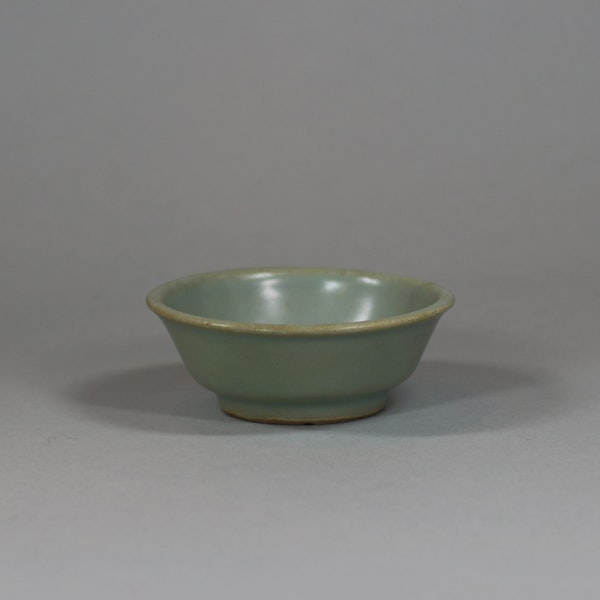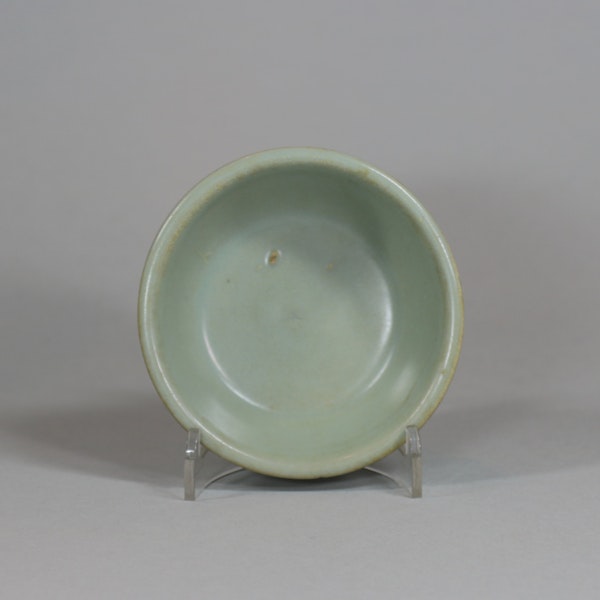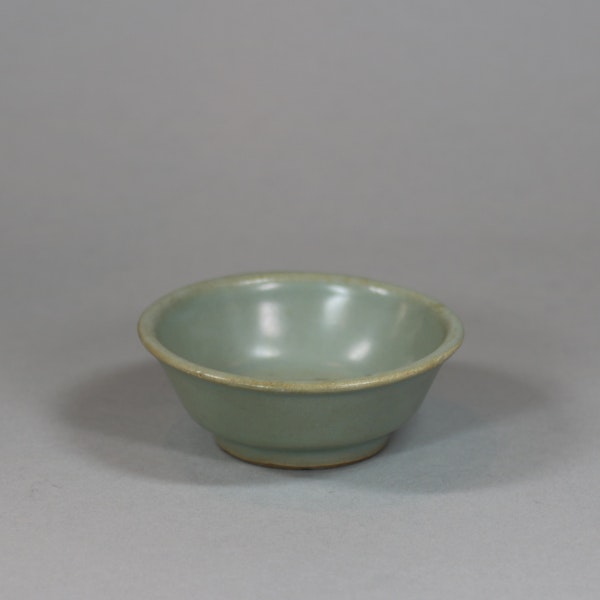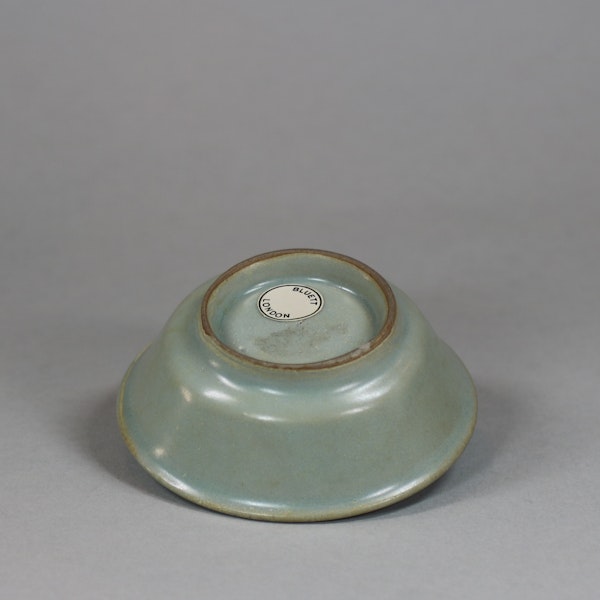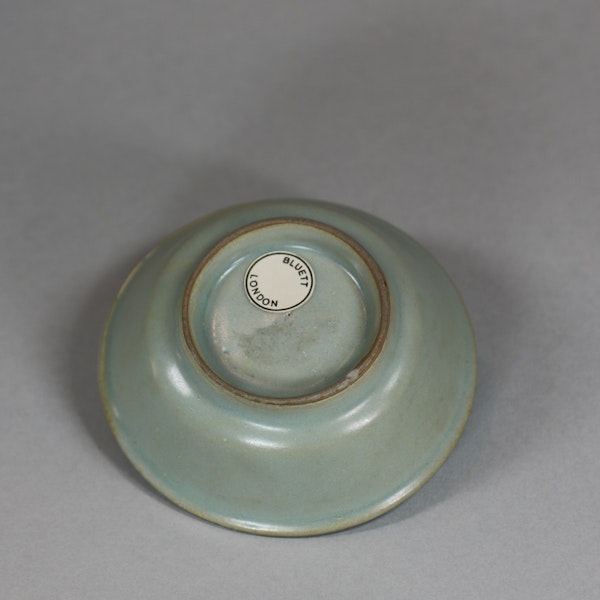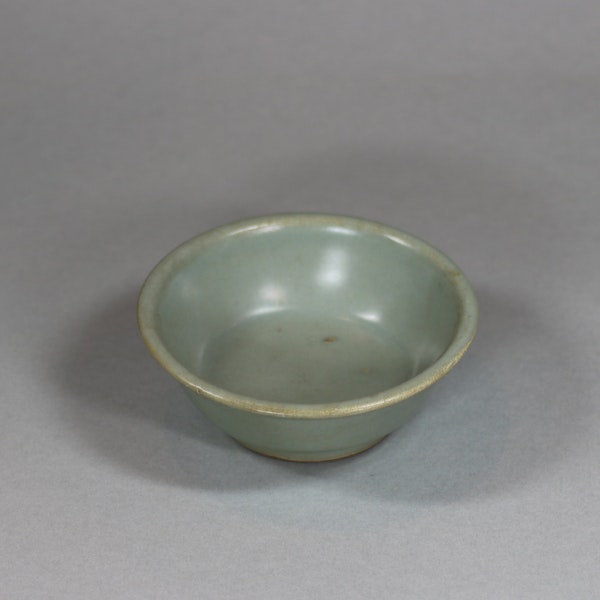Chinese small Longquan celadon brush washer, Southern Song dynasty (1127-1279)
Chinese small Longquan celadon brush washer, Southern Song dynasty (1127-1279)
POA
Description
Chinese small Longquan celadon brush washer, Southern Song dynasty (1127-1279), covered in a sea-green glaze, the spreading sides slightly everted at the rim, rising from a tapered foot.
Dimensions:
Diameter: 9.5cm. (3 ¾ in.)
Condition:
Small frit to footrim
Notes:
For a similar example see the collection of the Victoria and Albert Museum, No. FE.180-1974. The Song dynasty is frequently divided into two distinct periods, the Northern Song (960-1127) and the Southern Song (1127-1279). After the Song was founded by military leader Zhao Kuangyin, who established his capital at Bianjing, economic stability became a defining characteristic of the period. Prosperity resulted in a huge population increase and the flourishing of culture underpinned by major developments such as the first paper money, the founding of commercial guilds, standardization of taxation and technological innovation across many different industries. The Southern Song, referring to the period after the Song lost control of the north to the Jin dynasty, nevertheless saw a continuation of innovation and economic stability, before Mongol invasion in 1279 led to Chinese reunification under the Yuan. The flourishing of education and the economy during the Song is reflected in ceramic production; Song kilns were widespread and exited in 130 counties of nineteen provinces, accounting for 75% of all kilns established throughout Chinese history (Li, 2006 p.133). Innovation led to the development of new kiln technology, with large-scale kilns increasing their output and the quality of their wares. There were also significant developments in glaze technology; fired in the climbing dragon kilns near the town of Longquan, celadon wares like this dish were particularly prized by members of the aristocracy, who admired the clarity and texture of the glaze. An essential item for literati and scholarly aristocrats, brush washers would have been a popular choice of object. As such, this dish is a perfect representation of the technical developments in ceramic technology and the educational flourishing within Song society.
A similar brush washer sold at Sotheby's on 1/11/2022.
Another example sold at Bonhams in 2013.
Provenance:
Bluett label to base. Ex collection Harley Preston
| item details | |
|---|---|
| Material and Technique | Longquan stoneware |
| Origin | Chinese |
| Period | 15th Century and Earlier |
| Condition | Other |
| Diameter | 9.5cm. (3 3/4in.) |
Product REF: U808
